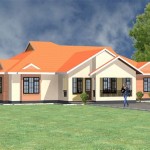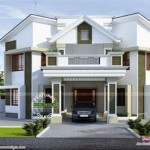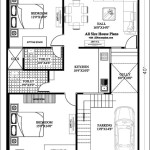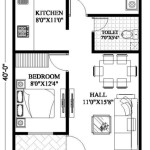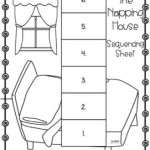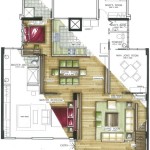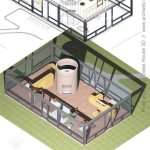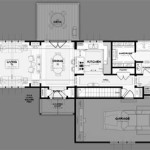Octagon Tiny House Plans: A Unique Approach to Minimalist Living
The tiny house movement continues to gain traction as individuals and families seek more sustainable and affordable living solutions. Within this movement, a variety of architectural styles and designs have emerged, each offering unique advantages and challenges. One particularly intriguing design choice is the octagon tiny house. Octagon tiny house plans present a departure from traditional rectangular structures, offering a distinctive aesthetic, space utilization potential, and construction considerations. This article will explore the key aspects of octagon tiny house plans, outlining their advantages, disadvantages, and essential considerations for those considering this unconventional dwelling.
The appeal of tiny houses stems from a desire to simplify life, reduce environmental impact, and achieve financial freedom. Octagon tiny houses amplify these benefits with their unique construction. This structural form allows for panoramic views, efficient heating and cooling, and a visually striking presence. However, building an octagon tiny house requires a different approach compared to traditional rectangular designs, demanding careful planning and precise execution. The following sections will delve into the key features and considerations associated with octagon tiny house plans.
Advantages of Octagon Tiny House Plans
Octagon tiny houses present several advantages that make them an appealing option for those seeking a minimalist lifestyle. These advantages often outweigh the challenges associated with their unique construction.
Enhanced Aesthetics and Natural Light: The most immediate advantage of an octagon tiny house is its distinctive aesthetic appeal. The shape naturally draws the eye and creates a visually interesting structure. The multiple angles of the walls allow for more windows, maximizing natural light penetration into the living space. This abundance of natural light creates a brighter, more inviting interior, reducing the need for artificial lighting during the day and enhancing the overall living experience. The panoramic views offered by the numerous windows also connect the inhabitants more intimately with the surrounding environment.
Efficient Space Utilization: While the angular nature of an octagon might initially seem to create unusable space, the reality is often quite different. Octagon tiny houses can be surprisingly efficient in their space utilization. The central area of the octagon naturally lends itself to open-plan living, providing a spacious and airy feel. The angled walls can be used to create distinct zones within the open space, such as a living area, kitchen, and sleeping area. Built-in furniture and storage solutions can be seamlessly integrated into the angles of the walls, maximizing storage capacity and minimizing wasted space. For example, a triangular corner could house a custom-built bookshelf or a cozy reading nook.
Structural Integrity and Stability: Properly designed and constructed octagon structures can exhibit exceptional structural integrity and stability. The shape distributes weight evenly, making them resistant to wind and seismic forces. The rigidity of the structure contributes to its longevity and reduces the risk of structural failure. This inherent stability is particularly beneficial in areas prone to extreme weather conditions. The octagonal shape also reduces the surface area exposed to direct sunlight and wind, contributing to improved energy efficiency.
Potential for Modular Construction: Octagon tiny houses lend themselves well to modular construction techniques. The octagon can be divided into identical triangular or trapezoidal sections that can be pre-fabricated off-site and then assembled on-site. This approach can significantly reduce construction time and costs, as well as minimize waste and environmental impact. Modular construction also allows for greater control over the quality of the materials and workmanship. This modular approach can be particularly beneficial for DIY builders who may lack the skills or resources to construct the entire structure from scratch.
Disadvantages and Challenges of Octagon Tiny House Plans
Despite their advantages, octagon tiny house plans also present several challenges that need to be carefully considered before embarking on such a project. These challenges primarily relate to the complexity of the design and construction process.
Complex Construction and Framing: Building an octagon tiny house is inherently more complex than building a traditional rectangular structure. The angled walls require precise measurements and cuts, demanding a high level of carpentry skill. The framing process involves intricate joinery and attention to detail to ensure structural integrity and a weatherproof seal. This complexity can significantly increase construction time and costs, particularly if employing professional builders. DIY builders should carefully assess their skills and experience before attempting an octagon tiny house project.
Challenges in Furnishing and Interior Design: The angled walls of an octagon tiny house can present challenges when it comes to furnishing and interior design. Standard rectangular furniture may not fit flush against the walls, resulting in awkward gaps and wasted space. Custom-built furniture may be necessary to maximize space utilization and create a cohesive aesthetic. This can add to the overall cost of the project. Careful planning and creative design solutions are essential to overcome these challenges and create a functional and comfortable living space. Utilizing built-in storage and multi-functional furniture can help optimize space efficiency.
Increased Material Waste: The angled cuts required for octagon construction can lead to increased material waste compared to rectangular construction. This is particularly true for materials like lumber and sheathing. Careful planning and precise cutting techniques can help minimize waste, but it is still likely to be higher than in a traditional build. This increased waste can contribute to higher material costs and a larger environmental footprint. Reusing and recycling materials can help mitigate this issue.
Potential Difficulty in Securing Permits and Financing: In some areas, obtaining permits and financing for unconventional structures like octagon tiny houses can be more challenging than for traditional rectangular houses. Building codes are often designed with rectangular structures in mind, and it may be necessary to demonstrate that the octagon design meets or exceeds the code requirements. Lenders may also be hesitant to finance an unconventional structure due to perceived resale risks. Thorough research and communication with local building officials and lenders are essential to navigate these challenges.
Key Considerations for Octagon Tiny House Plans
Successfully planning and building an octagon tiny house requires careful consideration of several key factors. These considerations span design, construction, and legal aspects of the project.
Design and Layout Optimization: Efficient design and layout are crucial for maximizing the usability of an octagon tiny house. The design should consider the flow of movement, the placement of furniture, and the integration of storage solutions. Utilizing computer-aided design (CAD) software can help visualize the space and experiment with different layouts. Special attention should be paid to the placement of windows and doors to optimize natural light and ventilation. The design should also consider the specific needs and lifestyle of the occupants.
Material Selection and Sustainability: Choosing the right materials is essential for ensuring the durability, energy efficiency, and environmental sustainability of an octagon tiny house. Opting for locally sourced and sustainably harvested materials can minimize the environmental impact of the project. Using reclaimed or recycled materials can further reduce waste and costs. Proper insulation is crucial for maintaining a comfortable indoor temperature and reducing energy consumption. The choice of roofing material should also be carefully considered, taking into account durability, weather resistance, and aesthetic appeal.
Legal and Regulatory Compliance: It is crucial to thoroughly research and comply with all applicable building codes, zoning regulations, and permit requirements before starting construction. This may involve working with local building officials to ensure that the octagon tiny house meets or exceeds the code requirements. Some jurisdictions may have specific regulations regarding tiny houses, such as minimum size requirements or restrictions on placement. Obtaining the necessary permits is essential to avoid potential fines or legal issues. Failing to comply with regulations can result in costly delays and rework.
Expert Consultation and Skilled Labor: Due to the complexity of octagon construction, it is advisable to consult with experienced architects, engineers, and builders who have expertise in this type of structure. A qualified professional can provide valuable guidance on design, structural integrity, and construction techniques. Hiring skilled labor is essential for ensuring that the project is completed to a high standard of quality. Even for DIY builders, seeking advice and assistance from experienced professionals can help avoid costly mistakes and ensure the safety and longevity of the structure.
In conclusion, octagon tiny house plans offer a unique and compelling approach to minimalist living. While they present certain challenges related to design and construction, their aesthetic appeal, efficient space utilization, and structural integrity make them an attractive option for those seeking an unconventional and sustainable dwelling. Careful planning, attention to detail, and skilled execution are essential for successfully realizing an octagon tiny house project. Thorough research, expert consultation, and compliance with regulations are crucial for navigating the complexities of this unique building style.

House Design Book Small And Tiny International Home Plans Round Octagon

Floorplan Hexagon House Round Plans Floor

Small Octagon House Floor Plan Plans And More

Modern Style House Plan 2 Beds 1 Baths 696 Sq Ft 60 104 Plans Octagon Round

The Classic Deltec Is A Genius Tiny House Design Squeezed Into 328 Square Feet Houses

5 Things I Learned So Far About Building A Tiny House On Foundation For Smate Island The Home

Octagon House Cottage Floor Plans

The Octagon Tiny House Is At Least 8 Shades Of Amazing
How To Draw A Tiny House Floor Plan The Home

The Octagon 1371 3 Bedrooms And 2 5 Baths House Designers

